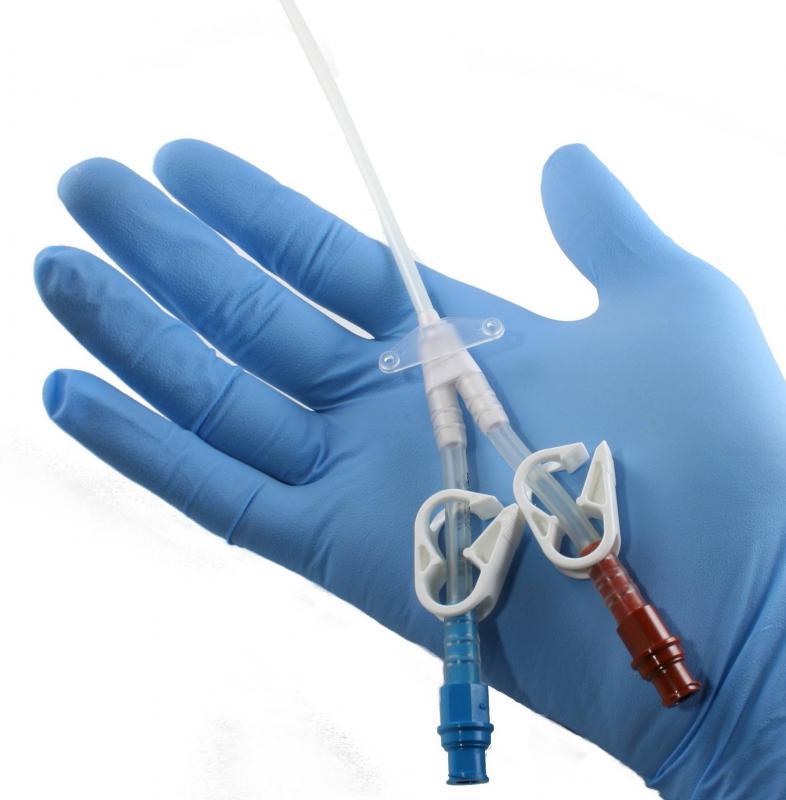At TheHealthBoard, we're committed to delivering accurate, trustworthy information. Our expert-authored content is rigorously fact-checked and sourced from credible authorities. Discover how we uphold the highest standards in providing you with reliable knowledge.
What is a Heparin Flush?
A heparin flush is a procedure which is done to ensure that a catheter remains clear. The heparin prevents clotting inside the catheter so that medication can flow through it and blood can be taken from it for analysis. This procedure may be done by a care provider in a hospital setting or by a patient at home after the patient has been carefully instructed in how to perform a heparin flush. Patients who need to do flushes at home are usually given handouts as well as personal instruction by a nurse or doctor and it is important to be attentive as heparin flushes can be dangerous.
Catheters are tubes placed under the skin to secure venous access. They may be used in a wide variety of settings and for an assortment of purposes. For example, cancer patients are sometimes fitted with temporary catheters and ports for infusion of chemotherapy so that a nurse does not need to place a line for each treatment, and people in the hospital may be given intravenous lines so that medications can be delivered intravenously and to provide hospital personnel with fast access to the patient's veins.

The longer a catheter is left in place, the higher the probability that it will become blocked by blood clots or other foreign materials. For this reason, the catheter periodically needs to be flushed with a solution which will clear the line. If this is not done, the patient could develop an infection, the catheter could rupture, or the patient's medications might not be delivered.

With a heparin flush, a diluted solution of heparin is injected into the catheter. Heparin is an anticoagulant and it will break up any clots which might be forming in the catheter. Doctors may also use a saline flush, in which the catheter is flushed with sterile saline; sometimes both types of flush are used in catheter management. The heparin flush needs to be performed consistently to keep the catheter clear.

The heparin solution designed for heparin flushes is not designed for oral or injectable use. It has been formulated specifically for use with catheters, and it is important to use the right dosage, which depends on the type of catheter and the patient. Some companies manufacture heparin flush syringes which are prepackaged with diluted doses and are ready for use. In other cases, a syringe must be prepared for each flush.
One common complication of a heparin flush is bleeding problems. Patients should report symptoms like bleeding gums, dark urine, and unusual bruising to their physicians.
AS FEATURED ON:
AS FEATURED ON:

















Discussion Comments
We use 20 IU/ml.
This may seem stupid, but I have a large supply of heparin syringes which are no longer needed. Can they be used to store hard contact lenses, or to use as a rinse after storing them in saline solution? Are they dangerous to the eyes?
What concentration of heparin is most commonly used to do a heparin flush?
Post your comments